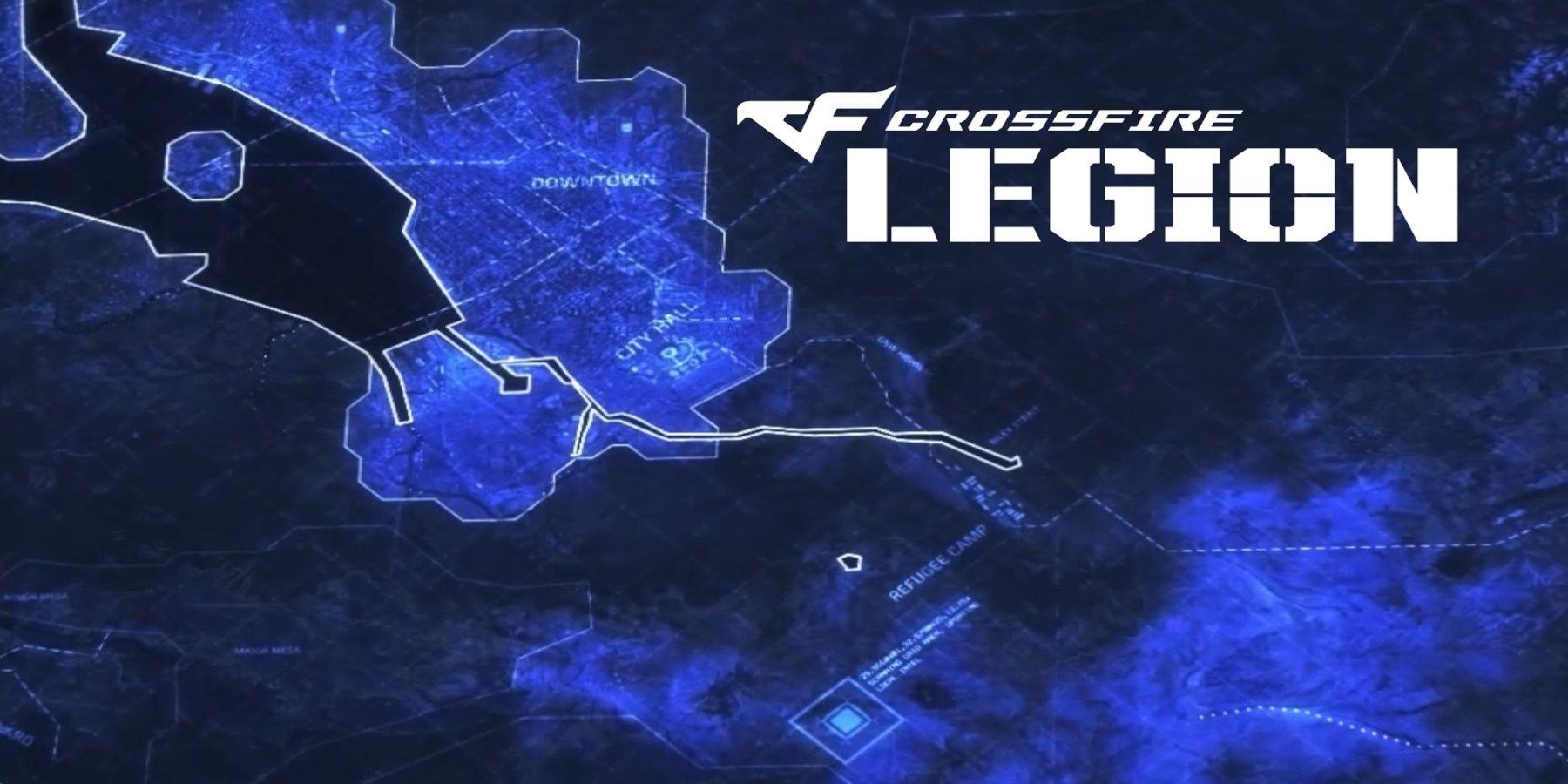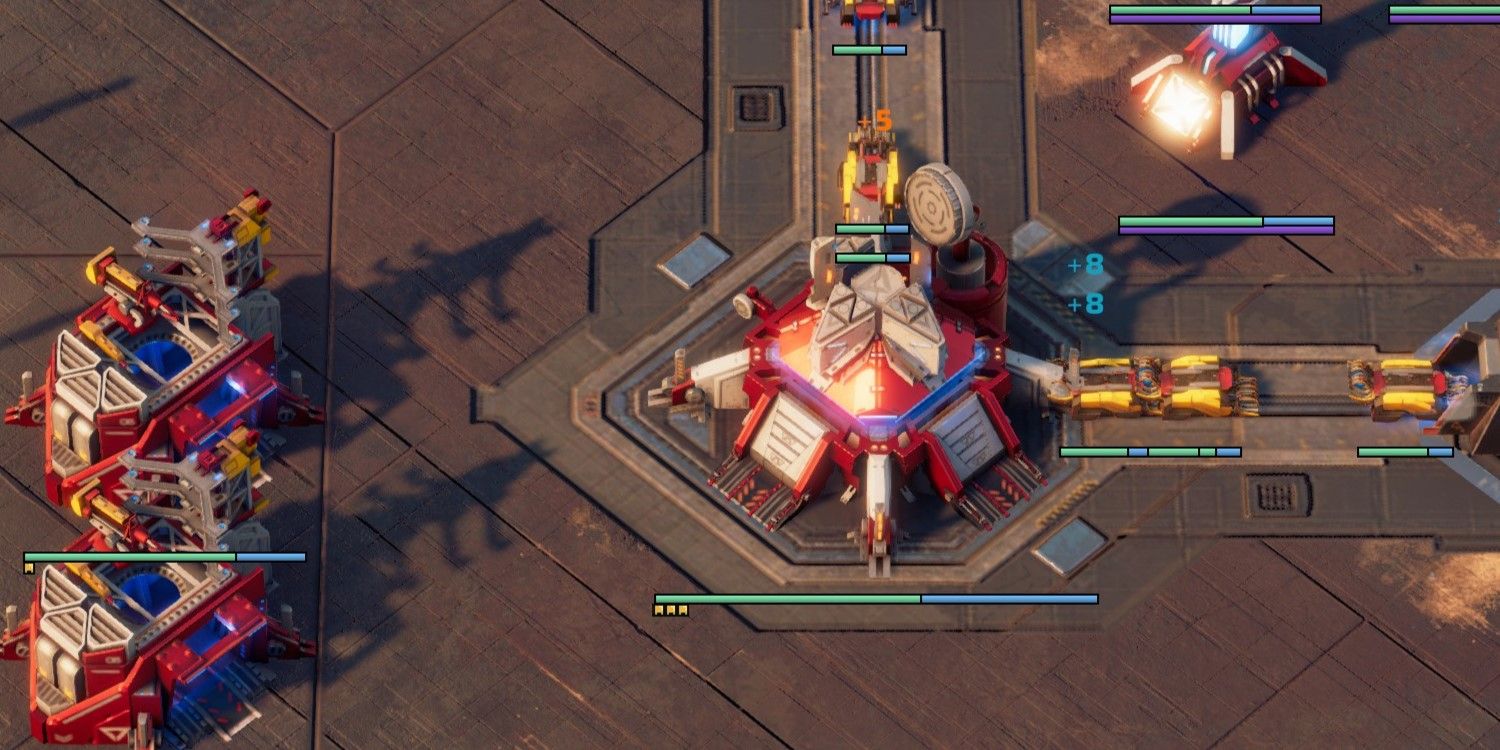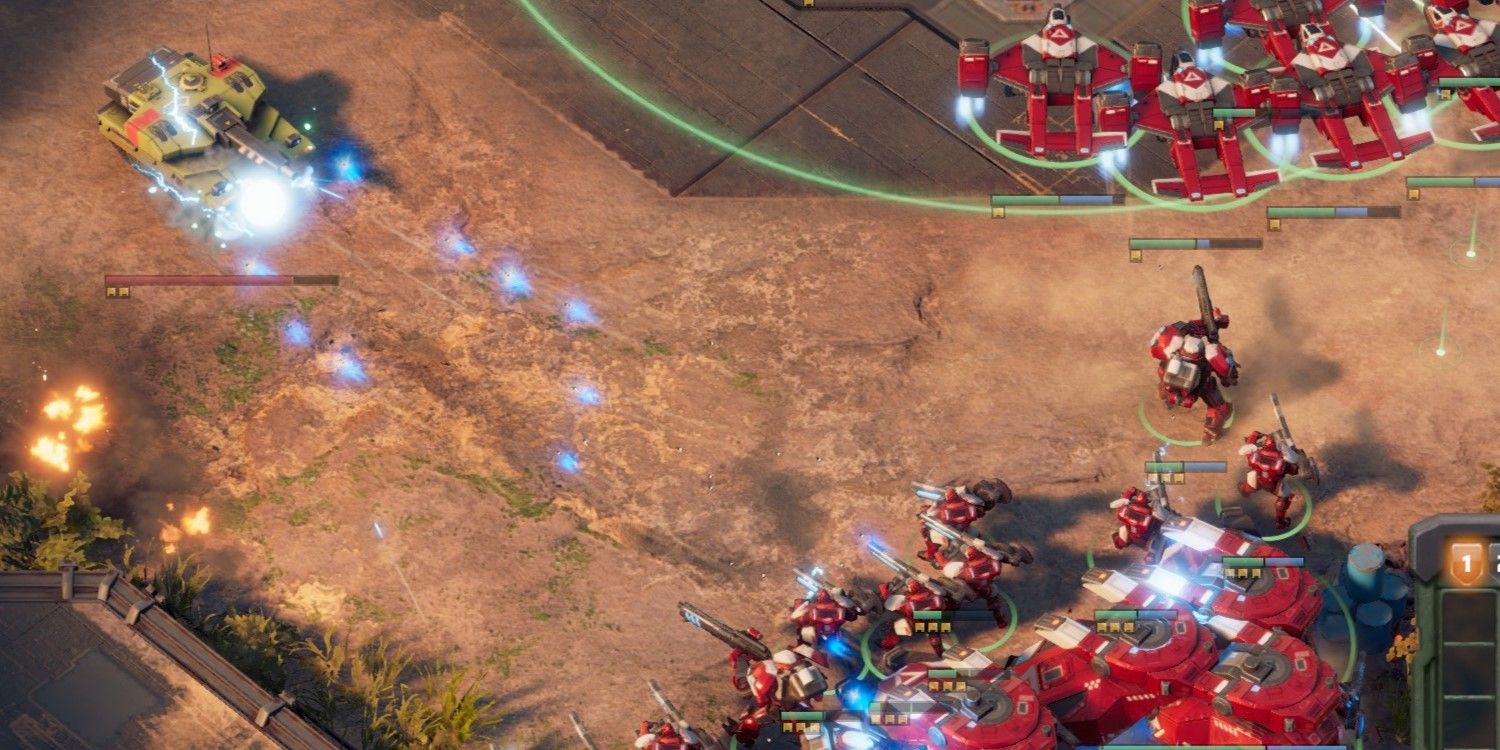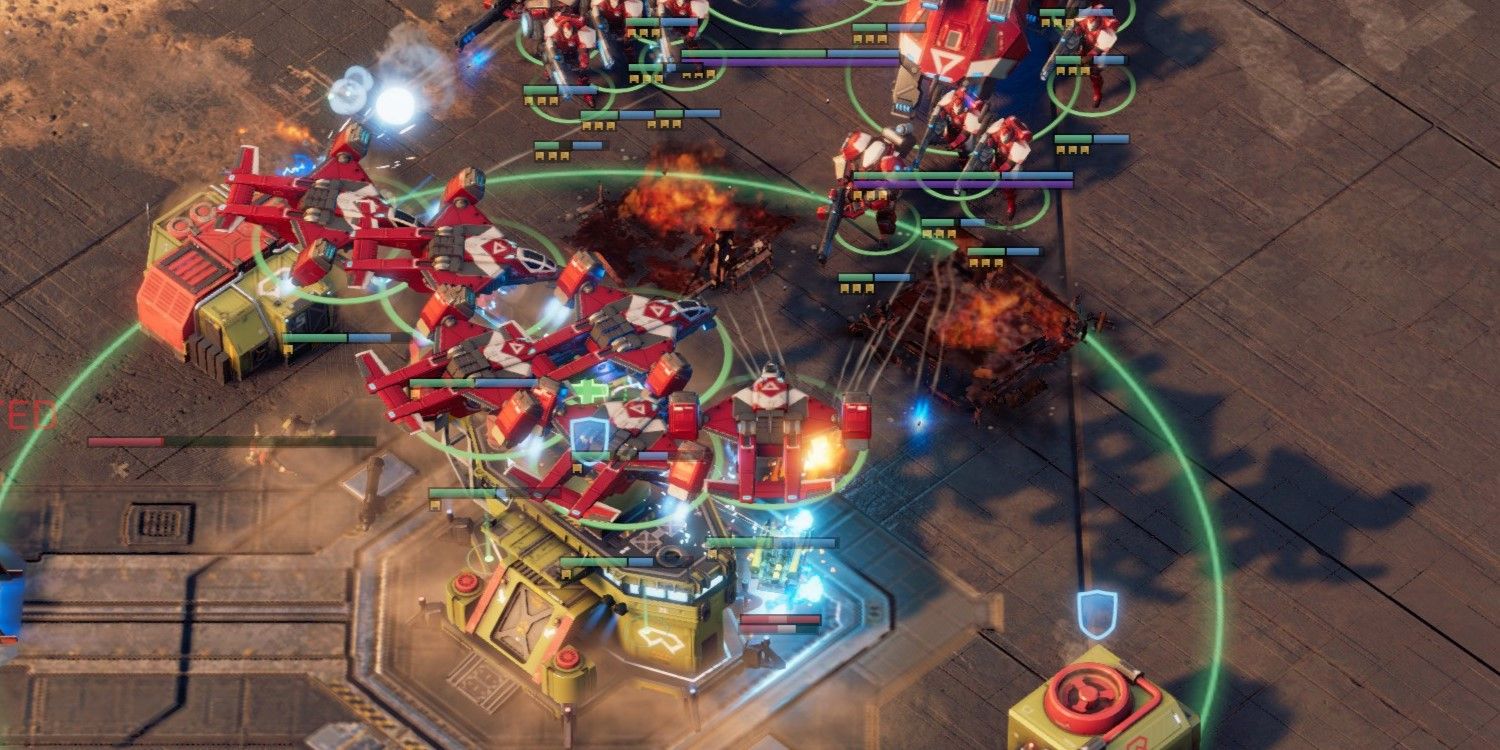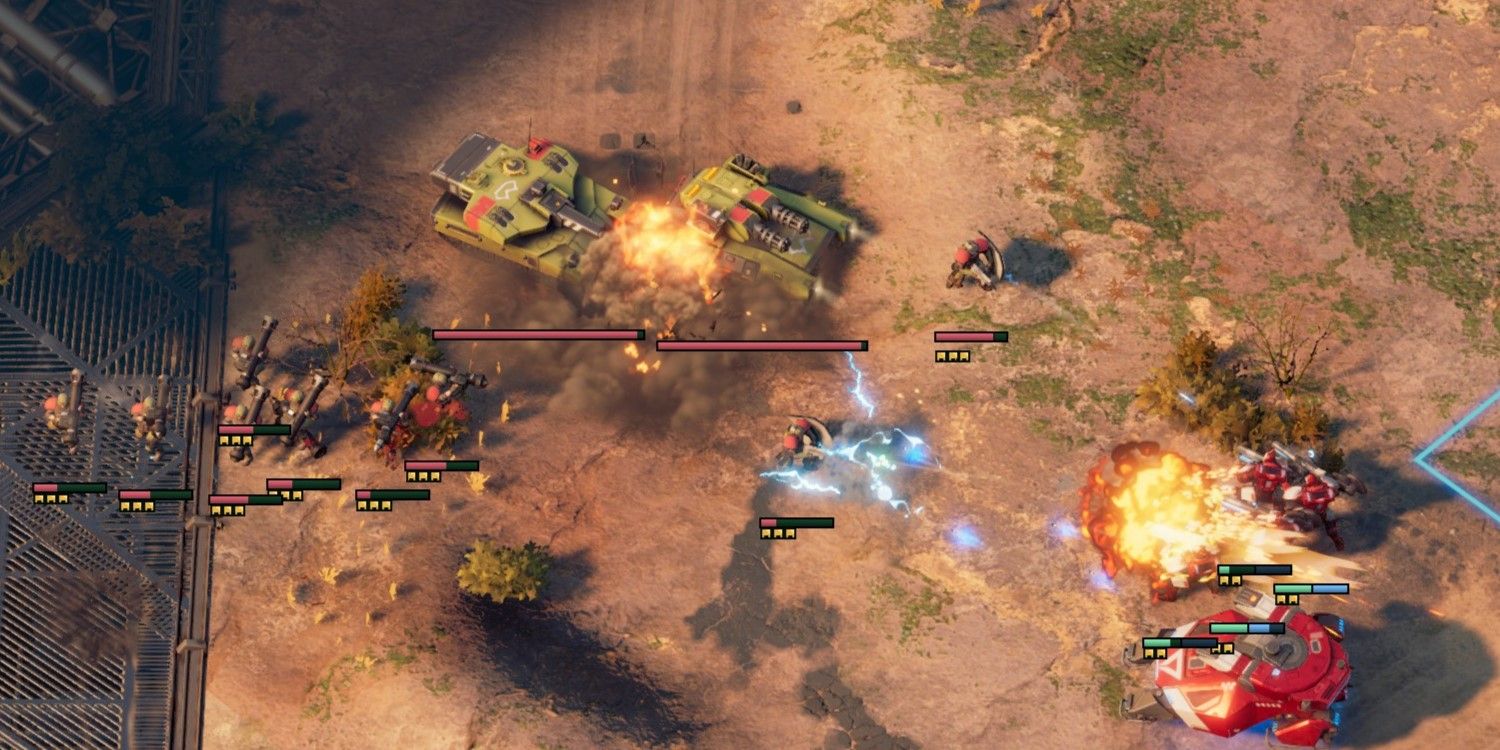Founded by members of the former developer Relic Entertainment, the company behind Homeworld, Dawn of War, and Company of Heroes, Blackbird Interactive has been focused on developing Real-Time Strategy and Simulation games since 2007. Its latest title, Crossfire: Legion, departs from having a mobile ‘mothership’ and instead attempts to reincarnate another nostalgic and classic game style, Command and Conquer.
Taking place in the dystopian future of the Crossfire Series where companies, instead of countries, are the dominant power, Crossfire: Legion features three distinct factions. The Global Risk is a typical corporate military superpower that has access to an array of powerful conventional hardware like tanks and jets. The Black List is a ragtag group of freedom fighters that somehow got its hands on missile helicopters, stealth technology, and heavy artillery, but typically has less advanced combat assets. And finally, the New Horizon is a techno-fascist regime that wants to free humanity by enslaving them. Their units are extremely advanced and have personal energy shields and plasma weaponry.
The gameplay of Crossfire: Legion is very much what is expected from a Command and Conquer-inspired game. There are resources to gather, buildings to build, units to train, and enemies to move towards. It is functional if not very inspired. The number of units available to train is limited by mission in the campaign, and by a “deck” in multiplayer. Typically, players will only have a couple of units worth training on each mission, and there is also an extremely limited number of building types, which streamlines gameplay, but makes it a little lackluster.
The campain typically offers players two infantry types, two vehicle types, and two air types, for a total of six units. Occasionally, additional units will be available, but not often. This is somewhat mirrored in multiplayer where, upon choosing one of the nine commanders, there is a choice of seven units to make up the match roster. This means the player is always limited by choices made before the game even starts, and adapting to the enemy strategy can be difficult if they chose units that counter their deck. It's clear that Blackbird Interactive is pushing for a competitive multiplayer experience, but limiting in-game adaptability could cause balance issues.
In the campaign and multiplayer, commanders have access to commander powers that can range from the extremely powerful “Fire at Will” that eliminates entire armies, to significantly less useful abilities. In the campaign, these powers can be used fairly liberally, as energy will replenish with each unit killed or lost, but in competitive multiplayer, it is a limited resource that does not replenish. This means that frugality is important when choosing when to spend power reserves.
The campaign is short but enjoyable, with a difficulty that is forgiving regardless of the difficulty level. The toughest missions are those where units cannot be built, and even those are not particularly challenging if the player is careful. The story follows each of the three factions as they negotiate their objectives, and is fairly bland and forgettable. That said, the mission diversity is where the game shines. There are capture-the-point missions, attack missions, defense missions, timed missions, etc. It makes for a decent array of objectives to experience.
Unfortunately, combat feels a little bit shallow at times. While many units have a special ability or two, most feel niche or even irrelevant. It is a little different in situations where reinforcements cannot be built, but most of the campaign can be beaten by simply amassing the population cap of the strongest units available and sending them to annihilate everything in their path.
Speaking of the population cap, it is set at 150 in most campaign missions, and at a maximum of 300 in multiplayer. This might seem like a lot of units given that workers cost 1 population. Unfortunately, when infantry can cost 3 or 4 population each, vehicles can cost above 10, and some powerful units can cost up to 20, the population cap can be reached relatively quickly, and with few units.
It is also unfortunate that the game suffers from static base placement. Bases can only be built on a base area in which there are resource nodes nearby, which severely limits the ability to create a defended forward staging base to attack enemies. That being said, there are quite a few nodes to build bases on, and expansion is required to have any chance of winning in multiplayer. Defending these expansions can also be a challenge.
Graphically, the game looks nice, if a little generic, and runs great. There were no noticeable frame rate drops. The unit models and buildings are detailed and easily distinguishable from each other, which is important because focusing attacks on specific units can be crucial to victory.
In the campaign the map design is well done, objectives are clearly marked, and areas of approach are easy to identify and defend. Multiplayer maps also feel relatively well-designed and generally feature the symmetry required in a competitive RTS. There are a limited number of maps available; however, those that exist are varied in terms of layout and terrain type, giving the game a dynamic feel. In "player vs. player" there are a total of five maps available, eight in "payload", two in "cooperative", one in "battlelines", and one in "brawl". All-in-all Blackbird Interactive did a great job at designing its maps, it is just unfortunate there are not more of them.
The musical score for this game is top-notch as well. It features an ominous synth ambiance that matches the dystopian future setting. The sound effects are equally good, and the weapon and destruction sounds are immersive and visceral but Crossfire: Legion suffers from the same “we require additional pylons” or "we require additional overlords" problem that became a meme for Starcraft. Some voice lines are highly repetitive and can become a little annoying. The voice acting during in-game cut scenes and movies, however, is really well done.
Ultimately, Crossfire: Legion is a competent if generic Command and Conquer style game. It will appeal to those who enjoy the nostalgia of C&C, but given its largely forgettable campaign, limited map choice, few buildings, and small unit roster, it likely won’t have the same long-term appeal as other RTS games.
Crossfire: Legion is available now for PC. Game Rant was provided a Steam Code for this review.

